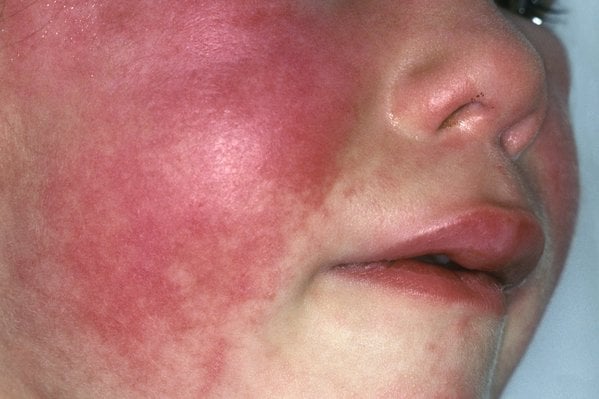SCHOOLS and nurseries across Somerset have been given advice on scarlet fever and group A streptococcal (strep A) infections following a recent national increase in notifications above seasonal expected levels. Somerset’s public health team reminded schools of the signs and symptoms to watch out for and the actions to be taken if they became aware of cases or an outbreak.
Early signs and symptoms of scarlet fever, which is a common childhood infection and not usually serious, include sore throat, headache, fever, nausea, and vomiting.
After 12 to 48 hours a characteristic red pinhead rash develops, typically first appearing on the chest and stomach, then rapidly spreading to other parts of the body, and giving the skin a sandpaper-like texture. The scarlet rash may be harder to spot on darker skin, although the ‘sandpaper’ feel should be present.
Patients typically have flushed cheeks and are pale around the mouth. This may be accompanied by a bright red ‘strawberry’ tongue. Scarlet fever can be treated with antibiotics to reduce the risk of complications such as pneumonia or spread to other people.
The advice has been issued after an unusually high number of cases across the country, blamed on lack of exposure to infections due to children being isolated during the pandemic. There have reportedly been 16 deaths of children from the infection across the UK in recent weeks.
Strep A can come from the same bacteria which causes scarlet fever and can also cause a range of other types of infection such as skin infections (impetigo) and sore throat. In rare cases, the bacteria can get into the bloodstream and cause a serious illness called invasive Group A strep (iGAS). While uncommon, there has been an increase in iGAS cases this year, particularly in children under the age of 10 years.
It is rare for children with scarlet fever to develop iGAS infection but parents are advised to trust their judgement when their child is unwell and if they seriously deteriorate they should speak to their GP or call 111 for advice.
The public health team said in schools and nurseries, infections could be spread through direct physical contact between children or staff, and through shared contact with surfaces such as table tops, taps, toys, and handles.
During periods of high incidence of scarlet fever there might also be an increase in outbreaks in schools, nurseries, and other childcare settings. As per national guidance, children and adults with suspected scarlet fever should be excluded from nursery or school for 24 hours after antibiotic treatment starts.
Good hygiene practice such as hand washing, regular cleaning of classrooms and equipment, and good ventilation were the most important steps in preventing and controlling the spread.
An ‘outbreak’ of scarlet fever means two or more cases attending the same school or nursery or other childcare setting notified within 10 days of each other. If an outbreak is suspected, staff are advised to contact their health protection team (HPT) on 0300 303 8162 for advice. This includes if there are one or more cases of chickenpox or flu in a class that has scarlet fever at the same time. HPT should also be called if an outbreak of scarlet fever occurs in a setting providing care or education to clinically vulnerable children, or an outbreak continues for longer than two weeks, or in the event of a hospitalisation.




Comments
This article has no comments yet. Be the first to leave a comment.